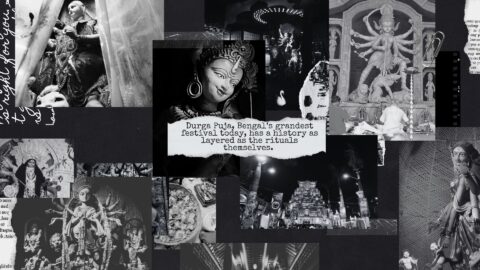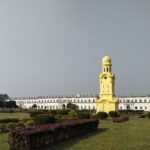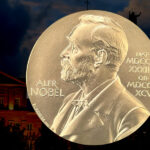Durga Puja 2025: When the Divine Feels Like Home in Kolkata
There are times when Kolkata shakes off its everyday worries and just breathes. It’s like the whole city turns into one big, happy heart. It starts with a soft, warm breeze that rustles through the shiuli trees and whispers along the Ganga. You can smell autumn coming, and it smells like hope and home. That’s when everyone in Bengal knows: Ma Aschhe – Mom’s coming home!
In 2025, Kolkata’s getting ready to celebrate Durga Puja again. It’s the biggest, most amazing festival you can imagine – a mix of faith, art, and pure joy. For five days (or even months leading up to it), the city transforms. It’s like a huge art project where gods come to life. Old stories get told with bright lights and bamboo, and it feels like the gods are right here with us.
The Sound of the Drums: Faith Gets a Rhythm
If you wander down a small street in Kumartuli, you’ll smell clay and the Ganga mixing together. That’s where the drummers start tuning up. The sound they make is so basic and real – dhak dhak dhak dhak – like the city’s own heartbeat.
For generations, the people here have been making gods out of clay. But it’s not just any clay. It’s special, taken from riverbanks, temples, and even the homes of sex workers. It shows that the Goddess cares about everyone. During Durga Puja in Kolkata, Ma belongs to all – good and bad, rich and poor, believers and those who are still searching.
In 2025, Kumartuli’s buzzing with excitement. The artists are mixing old ways with new technology. They’re not just making Durga’s ten arms out of clay, but using recycled stuff and cool light shows. The lights tell the story of how she beats Mahishasura over and over again, no matter the time or place. The message feels important now – because the bad stuff we face today isn’t just one monster. It’s hate, fear, and not caring.
As the drums play, the rhythm spreads all over the city – to every street, every house, and every heart.
From Old Stories to Motherhood: The Never-Ending Tale
Every Durga Puja tells the same story – about a battle that happened long ago, and a love that’s even older.
When the gods couldn’t beat Mahishasura on their own, they combined their powers. Brahma gave wisdom, Vishnu gave strategy, and Maheshwara gave strength. From all that, Durga was born. She’s bright, strong, and full of kindness. She’s Shakti – the power of women.
But Bengal also remembers another story – one that feels closer to home. For Bengalis, Durga is not just a warrior. She’s also Uma, the daughter who comes home once a year. Her trip from Mount Kailash to her dad’s house is like every daughter’s return home. It’s that feeling – part spiritual, part like a mother – that makes the story so personal.
When Bengalis say Asche Ma Asche, it’s not just about old tales. It’s about family, belonging, and memories. It’s about grandma lighting incense, mom polishing silver, and kids seeing the colorful lights for the first time.
Durga Puja is really a story about love – about creation coming back to where it started.
The City Turns into a Temple
By the time Mahalaya comes around, the city’s wide awake. At dawn, radios all over Bengal play Birendra Krishna Bhadra’s famous voice – Ya Devi Sarva Bhuteshu… – and people get teary-eyed in a way that only Bengalis understand. The sound of his voice marks the start of something holy. It’s not just a prayer, it’s like going from darkness to light.
Then, almost like magic, Kolkata changes.
Bamboo frames become beautiful temples. Things like thermocol, jute, brass, clay, old metal, and shiny fabrics come together to create pandals. They’re not just stages, they’re like doorways to another world. Every neighborhood tries to tell a story with its art – sometimes about myths, sometimes about ideas, sometimes about what’s happening in the world.
A City Wrapped in Something Holy
When the sun goes down during Durga Puja, Kolkata doesn’t feel like a city anymore. It feels like a living, breathing star. Every street shines like gold, and every lane hums like a prayer. The sky reflects all the lights, like the stars have come down to join us.
The air is full of laughter and music. Families, friends, couples, and even strangers walk together in a river of light. They stop for tea, snacks, and smiles. As you walk from one pandal to the next, time seems to disappear. All that’s left is rhythm, warmth, and wonder.
The smells of incense, fried snacks, and wet earth fill the air. Drummers in red and white play a beat that makes everyone’s heart race – a beat that feels both heavenly and homey.
And somewhere there, in all those faces, the old stories come to life. You see Ma Durga everywhere – in the tired mom praying, in the young girl dancing in front of the idol, in the old person smiling at the Goddess’s face in the candlelight.
In that moment, you can’t tell the difference between what’s human and what’s divine. Kolkata becomes a temple without walls, and everyone in it becomes a spark of faith. The night shines not just with lights, but with faith that you can see.
Echoes of the Past: When Royal Families Celebrated
Long before the city had neon lights and glass buildings, Durga Puja was a private celebration for Bengal’s rich families – the bonedi baris.
It’s said that Raja Kansanarayan’s big Durga Yajna in Taherpur Rajbari in the 16th century was the first of its kind. Later, Puja became a way for families to show off – with musicians, fireworks, and enough food to feed hundreds.
The Sabarna Roy Choudhury family, one of Kolkata’s oldest, kept up that tradition in their homes in Behala and Barisha. Even now, their Durga Puja is full of old rituals – like kumari puja, chandipath, and sindoor khela, where the customs of the past are still sacred.
But as time went on, the celebrations spilled out of the palaces and into the streets. The people made it their own. That’s how the Sarbojanin Puja was born – the people’s festival – where everyone could celebrate the goddess, and the city became her home.
Durga Puja 2025 still respects that history – big in scale, shared in spirit, and always meaningful.
The Old Stories and the New
What makes Durga Puja so special is that it can change without losing its heart.
In 2025, old traditions meet new ideas in ways that are both surprising and touching. Many pandals are going green, making idols with clay and natural colors so the river stays clean. Designers are using solar power for lights and AI for music, while storytellers are bringing the myths to life with cool light shows.
At Deshapriya Park, the whole story of Mahishasura Mardini is told with moving images – Durga’s spear flashes across the screen while chants fill the air.
At Shibmandir, the pandal is all about Shakti in Every Woman – showing Durga not just as a warrior but as a symbol of strength, fairness, and kindness. Women from all walks of life – police officers, doctors, teachers, and homemakers – are invited to pray together, bringing together what’s holy and what’s human.
And even with all the grand celebrations, there’s still time for quiet reflection – in the small corners of Ahiritola or Kashi Bose Lane, where the idols are simple, and the artists whisper the same prayer their ancestors did:
Ma, tomar aagomon shubho hok – May your arrival bless us all.
The Last Day:
You can’t tell the story of Durga Puja without talking about the ending – and there’s no ending more emotional than Dashami.
After five days of music, laughter, and prayer, it’s time to say goodbye. Women wear red-bordered sarees for Sindoor Khela, putting vermilion on each other’s foreheads with shaky hands – both a blessing and a farewell.
As the idols are carried onto trucks for Visarjan, the sky fills with cries of Asche Bochor Abar Hobe! – She will return next year!
At Babu Ghat, Princep Ghat, and Bagbazar, the river shines with golden light. The air is thick with emotion – the smell of incense mixing with tears. Men dance barefoot in the water, children wave flags, and the drums play one last time before going quiet.
And in that silence – that sad pause – is what the whole festival is about: that even when something ends, there’s still hope. Even when we say goodbye, we’ll meet again.
Durga Puja is not just about the Goddess winning. It’s about feeling our faith come back to life, year after year, in a world that really needs it.
Durga Puja 2025 – A Reflection of Who We Are
This year, as Kolkata celebrates in a world that’s changing fast – with technology, speed, and noise – Durga Puja is the one thing that connects everyone to something deeper. It’s when humans meet the divine, and when art touches our hearts.
The Goddess has always been more than just a myth here. She’s the courage of the woman walking home late, the kindness of the young person feeding the homeless, the creativity of the artist making clay into beauty, and the strength of a city that never forgets how to celebrate.
Durga Puja 2025 in Kolkata is not just a festival – it’s like being born again. It reminds us that what’s divine doesn’t live in the sky or in temples, but in every good deed, every creative thought.
As the city shines – from Kumartuli to Kalighat, from Salt Lake to Behala – one thing is clear: Ma never leaves. She just changes form – from idol to idea, from myth to movement, from goddess to mother.
Afterward: Always Coming Back
When the last drumbeat fades into the night, Kolkata pauses. The lights start to go out, pandals start to close, and yet, somewhere, a child is already whispering, Asche Bochor Abar Hobe. And in that whisper is what keeps the city alive – the never-dying belief that joy will come again, that the Mother will return, that creation never stops. Durga Puja is not just a festival of worship. It’s a celebration of life itself.



